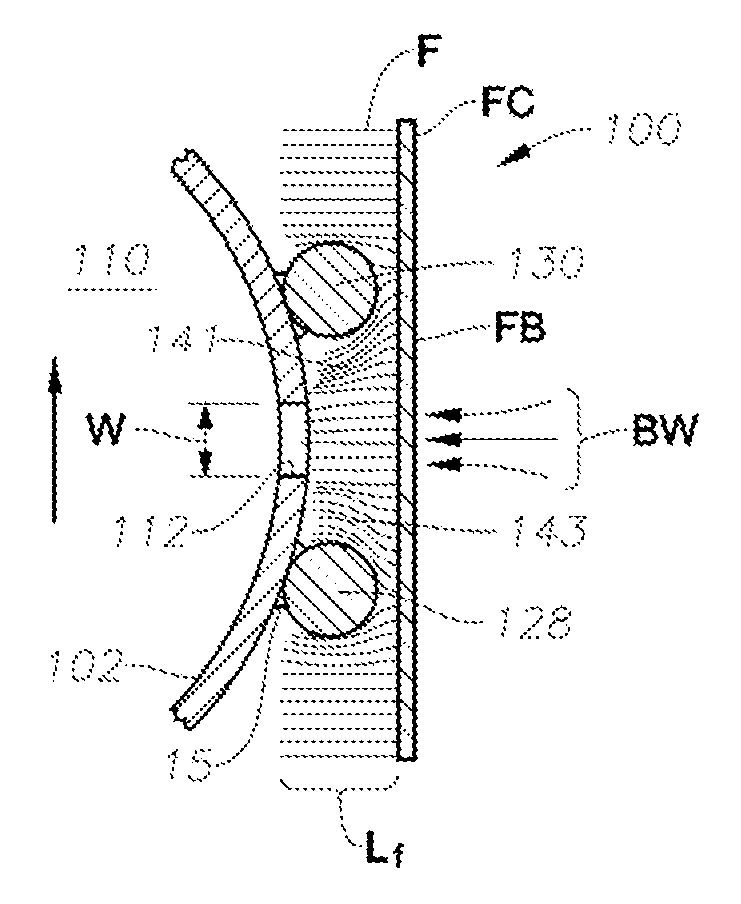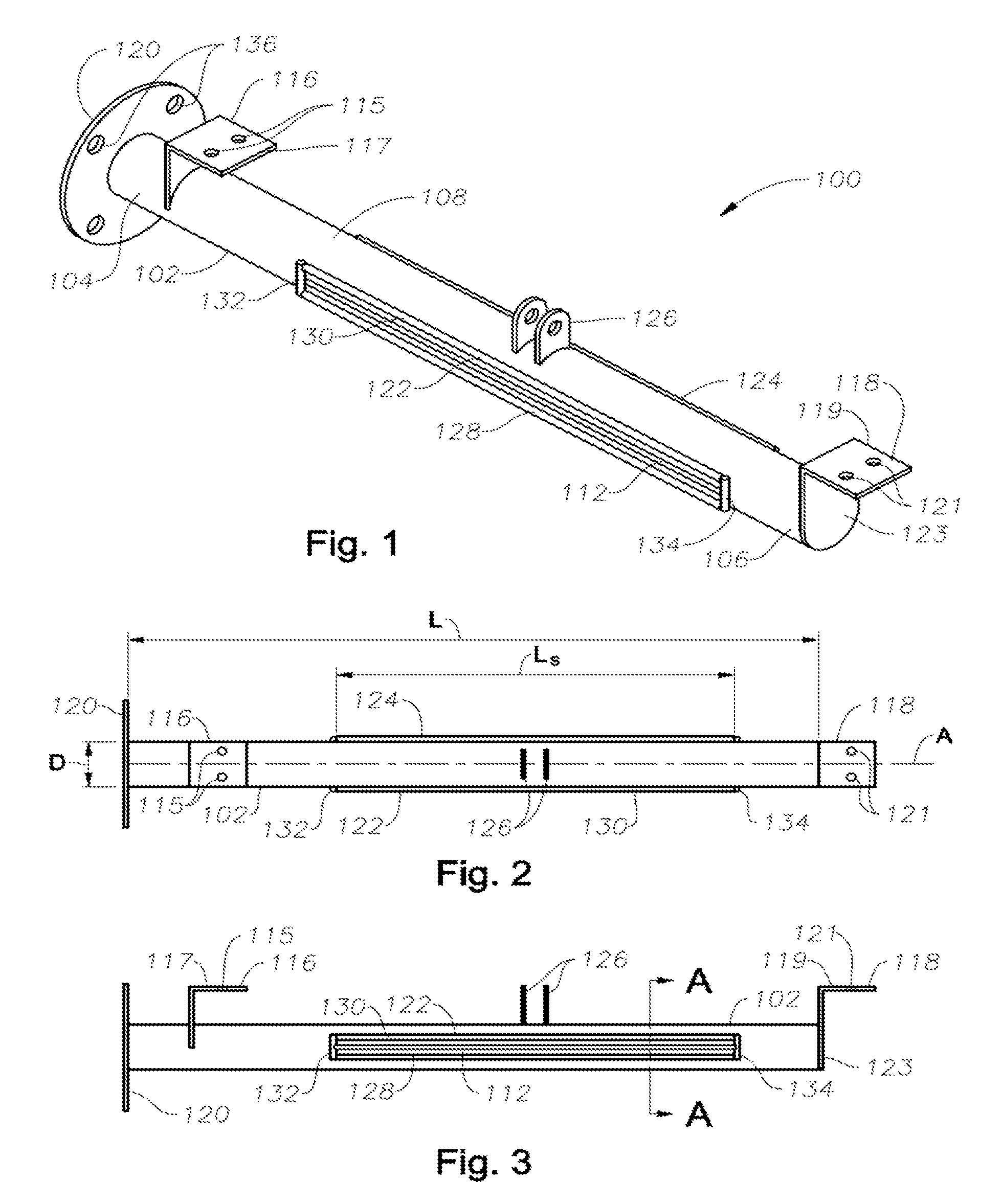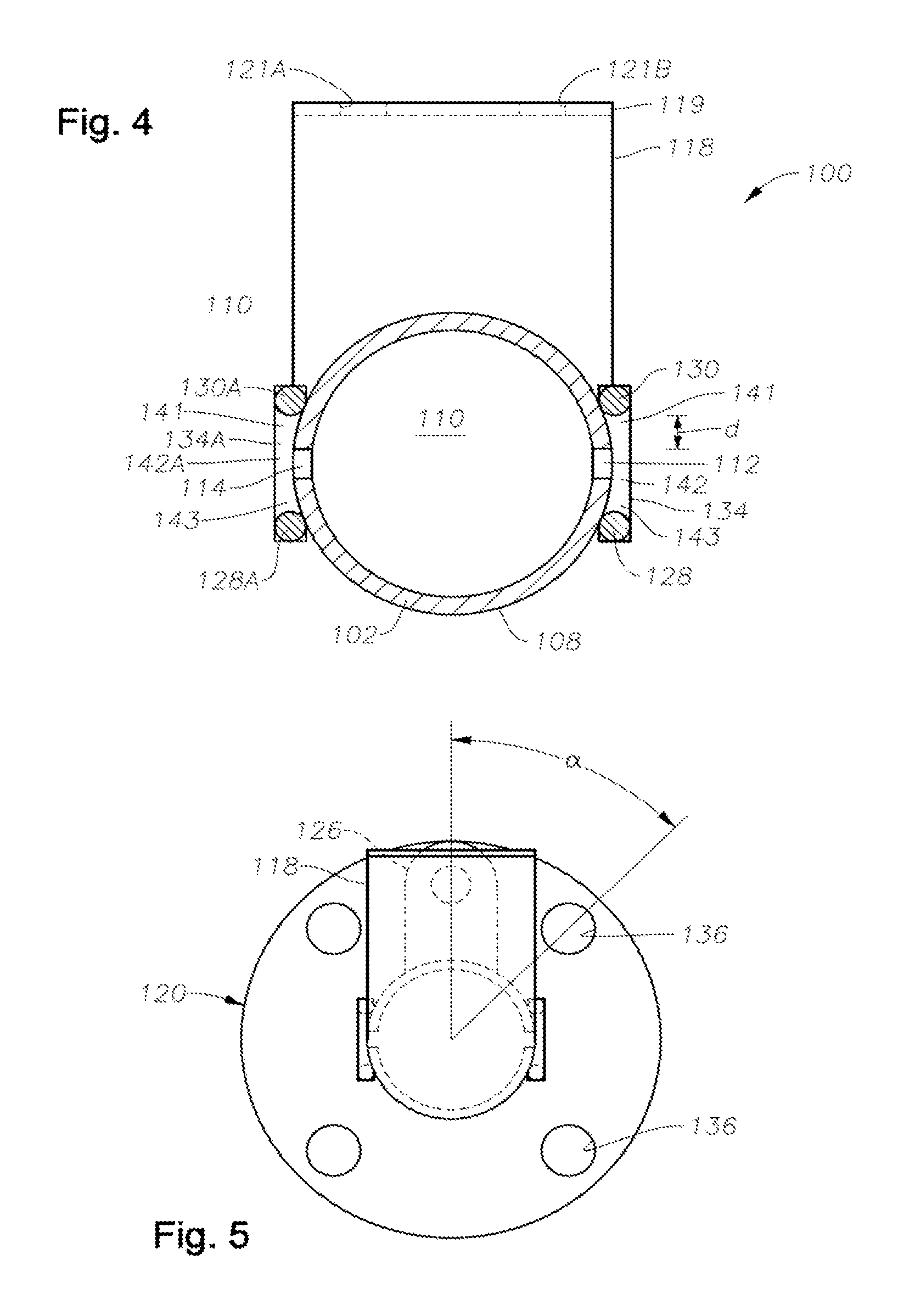Methods and apparatus for treating water and wastewater employing a cloth disk filter
a cloth disk and filter technology, applied in the direction of filtration separation, sedimentation settling tanks, separation processes, etc., can solve the problems of only being able to clean a single cloth surface, contaminating the filtered water, and common approaches, so as to reduce or overcome deficiencies and increase backwashing efficiency
- Summary
- Abstract
- Description
- Claims
- Application Information
AI Technical Summary
Benefits of technology
Problems solved by technology
Method used
Image
Examples
embodiment 100
[0065]Referring now to the drawing figures, FIG. 1 is a schematic perspective view of one embodiment 100 of a backwash header in accordance with the present disclosure, having a tubular body 102, a first end 104, a second end 106, and an exterior surface 108. Tubular body 102 defines at least one cavity 110, in this embodiment a single cavity 110, more clearly visible in FIG. 4. Although embodiment 100 comprises a tubular body that is substantially cylindrical (circular) in cross-section, “tubular” is not meant to be limited to cylindrical bodies. Tubular bodies having oval or polygonal (for example, rectangular and triangular) bodies may be envisioned and are considered within the present disclosure. Tubular body 102 may be steel, such as 304 or 316 stainless steel, titanium, aluminum, or other metal or metal alloy. In certain embodiments tubular body may be polymeric, such as a thermoplastic polymer, thermoplastic elastomer, or thermosetting polymer, or fiberglass reinforced plast...
embodiment 500
[0077]Another optional feature is the provision of a sludge concentration zone 157 between a pair or plurality of plates 154, 156 extending upward from the floor of vessel 2 at an angle from horizontal. Sludge concentration zone 157 may be described as a quiescent thickening zone. It need not be located as illustrated in the middle of vessel 2, this being only one possible embodiment. Embodiment 500 also illustrates an optional conduit 82 provided for withdrawing concentrated sludge from sludge concentration zone 157 when desired, for example through a valve 83. Concentrated sludge is typically routed to a belt filter press or to storage prior to being processed in a belt filter press, or other type of dewatering press. The dewatered sludge may be burned, landfilled, or otherwise disposed by alternate acceptable means if it meets applicable quality standards. Cleaned effluent fluid flows out of the filter through one or more effluent conduits 28, which may be manifolded together.
[00...
PUM
| Property | Measurement | Unit |
|---|---|---|
| diameter | aaaaa | aaaaa |
| diameter | aaaaa | aaaaa |
| distance | aaaaa | aaaaa |
Abstract
Description
Claims
Application Information
 Login to View More
Login to View More - R&D
- Intellectual Property
- Life Sciences
- Materials
- Tech Scout
- Unparalleled Data Quality
- Higher Quality Content
- 60% Fewer Hallucinations
Browse by: Latest US Patents, China's latest patents, Technical Efficacy Thesaurus, Application Domain, Technology Topic, Popular Technical Reports.
© 2025 PatSnap. All rights reserved.Legal|Privacy policy|Modern Slavery Act Transparency Statement|Sitemap|About US| Contact US: help@patsnap.com



